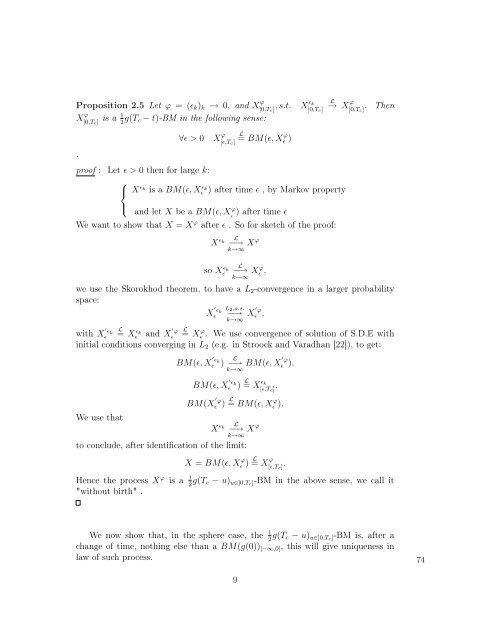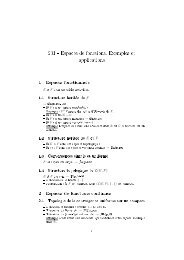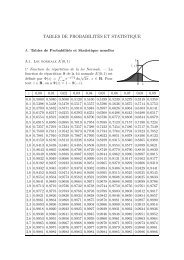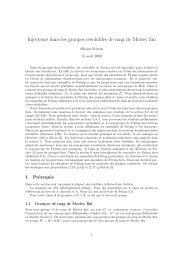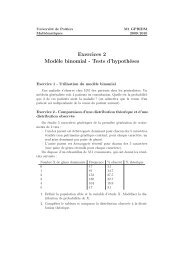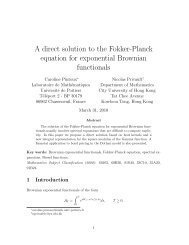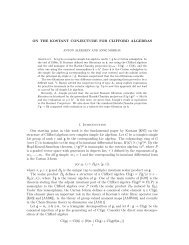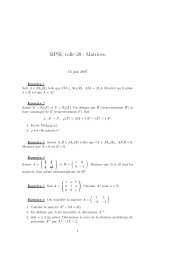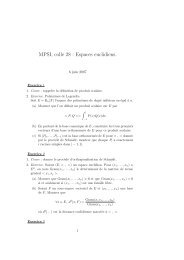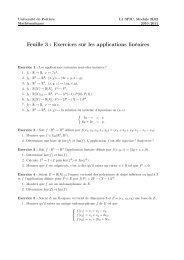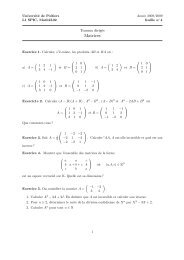THÃSE Koléhè Abdoulaye COULIBALY-PASQUIER
THÃSE Koléhè Abdoulaye COULIBALY-PASQUIER
THÃSE Koléhè Abdoulaye COULIBALY-PASQUIER
- No tags were found...
You also want an ePaper? Increase the reach of your titles
YUMPU automatically turns print PDFs into web optimized ePapers that Google loves.
Proposition 2.5 Let ϕ = (ɛ k ) k → 0, and X ϕ ]0,T , s.t. c] Xɛ k L]0,T c]→ X ϕ ]0,T . c]X ϕ ]0,T is a 1g(T c] 2 c − t)-BM in the following sense:Then.∀ɛ > 0 X ϕ [ɛ,T c]L= BM(ɛ, X ϕ ɛ )proof : Let ɛ > 0 then for large k:⎧⎨ X ɛ k is a BM(ɛ, Xɛ kɛ ) after time ɛ , by Markov property⎩and let X be a BM(ɛ, X ϕ ) after time ɛɛWe want to show that X = X ϕ after ɛ . So for sketch of the proof:X ɛ kso X ɛ kɛL−→k→∞ XϕL−→k→∞ Xϕ ɛ ,we use the Skorokhod theorem, to have a L 2 -convergence in a larger probabilityspace:X ′ ɛ kL 2 ,a.s.ɛ −→ X ′ ϕɛ ,k→∞Lwith X ′ ɛ kɛ = X ɛ kɛ and X ′ ϕ Lɛ = Xɛ ϕ . We use convergence of solution of S.D.E withinitial conditions converging in L 2 (e.g. in Stroock and Varadhan [22]), to get:We use thatBM(ɛ, X ′ ɛ kLɛ ) −→ BM(ɛ, X ′ ϕɛ ),k→∞BM(ɛ, X ′ ɛ kɛ ) = L X ɛ k[ɛ,T , c]BM(X ′ ϕɛ ) L = BM(ɛ, X ϕ ɛ ).X ɛ kL−→k→∞ Xϕto conclude, after identification of the limit:X = BM(ɛ, X ϕ ɛ ) L = X ϕ [ɛ,T c] .Hence the process X ϕ is a 1 2 g(T c − u) u∈]0,Tc]-BM in the above sense, we call it"without birth" .We now show that, in the sphere case, the 1 2 g(T c − u) u∈]0,Tc]-BM is, after achange of time, nothing else than a BM(g(0)) ]−∞,0] , this will give uniqueness inlaw of such process.749


